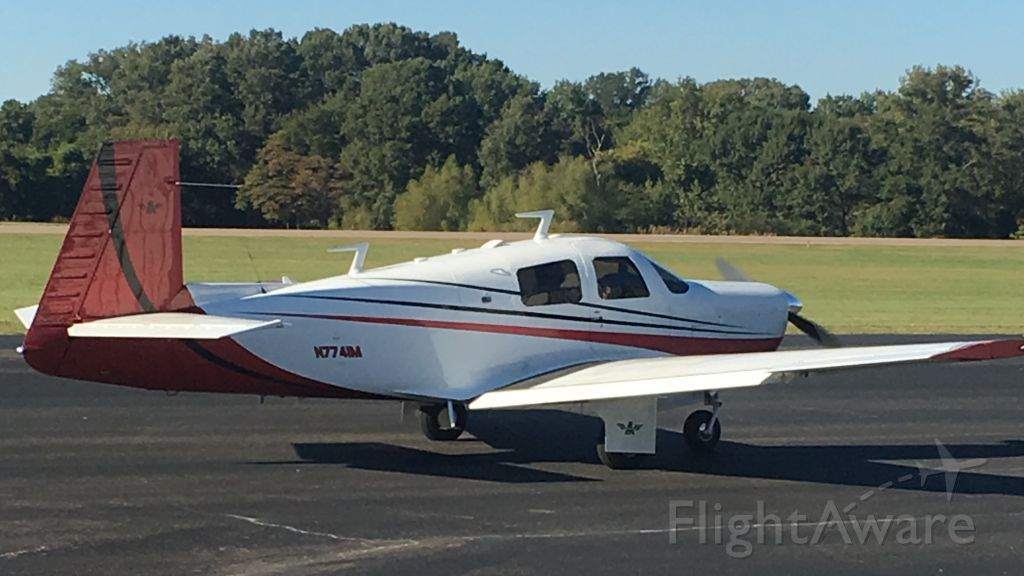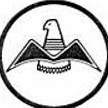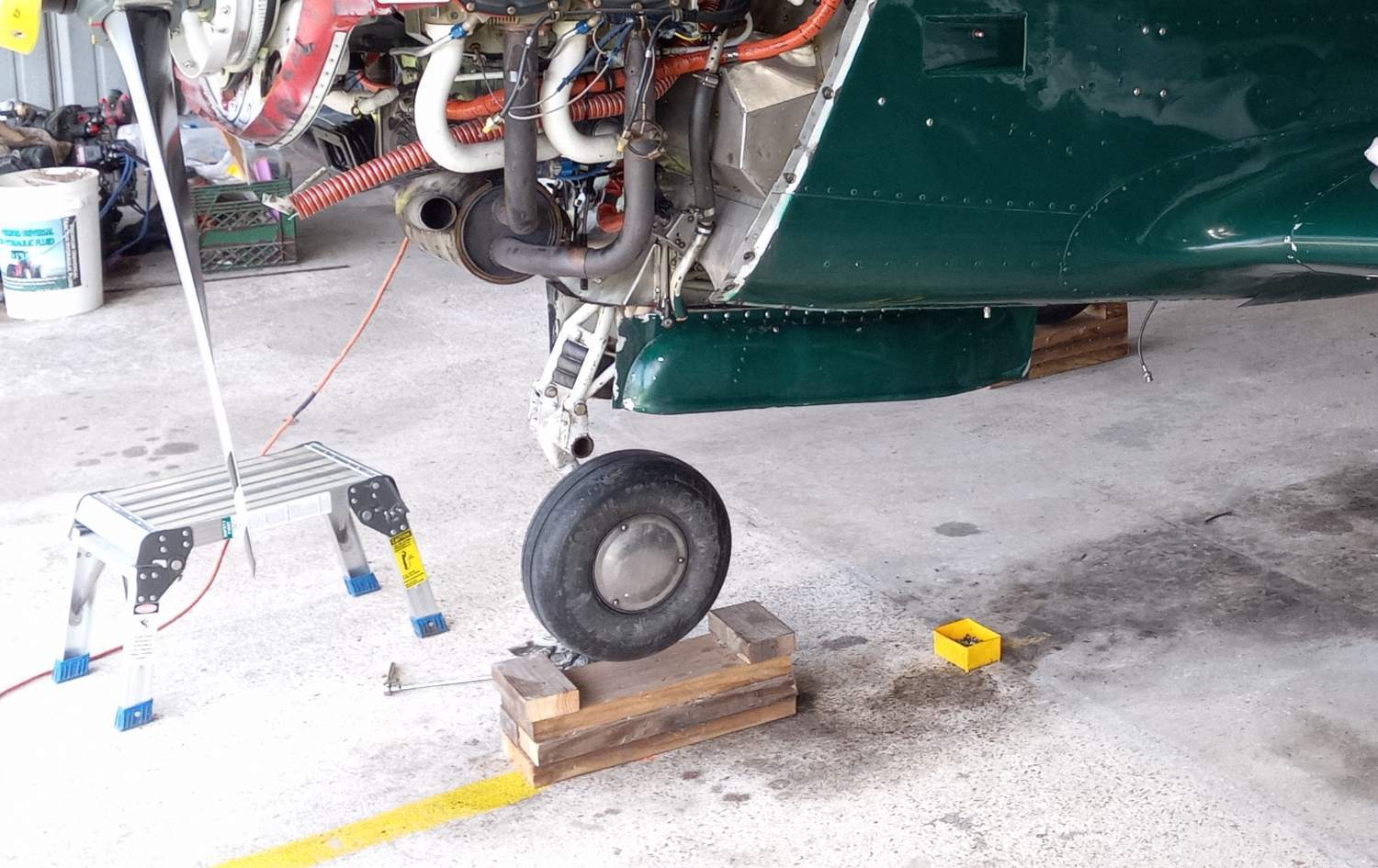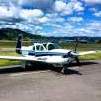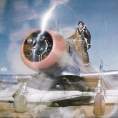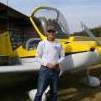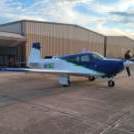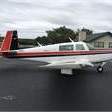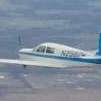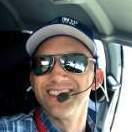Leaderboard
Popular Content
Showing content with the highest reputation on 06/19/2022 in all areas
-
I sold my PA30 Twin Comanche last year while the market was/is good. Wasn't using it for work or pleasure and even though the PA30 is one of the most economical twins it was still expensive to fly. Two engines, twice the gas, especially after owning a Mooney prior. Even though I missed my flying fix, I just couldn't justify the prices of anything that caught my eye. I've been without a plane for about 9 months now. We all know the Mooney is the speed efficient bird so I started thinking about another Mooney, but prices are pretty tough, and I still couldn't find the right fit for my mission and budget.. An occasional scan of the usual places didn't really pan out for me.... Until This!!.... I was doing a search while drinking my morning coffee last week and what do I see pop up.. My sweet old girl.. 7741M. Couldn't believe it!! While I liked the Twin Commanche and a super solid bird I always missed 41M. Lots of great memories, nostalgic trips from TN to New England, lots of learning and upgrades over my 5 yrs of ownership. Cutting to the chase.. I couldn't resist and made an offer to buy her back. The seller and I went back and forth a few times and finally came to terms. The contracts are in transit. Looks like she is coming back home in as good of condition as I sent it her. A few more hours on her, but she's got new bladders and that's a plus. Maybe some things are just meant to be.. I'll keep you updated as it moves along!! -Tom9 points
-
Here is what a clogged injector looks like (data from G3X EIS) on a Mooney M20J. I was cruising at 10,000' feet when the engine suddenly became rough. You can see the dip in the EGT #1 trace when the injector clogged. This caused an increase in metered fuel pressure causing the servo to reduce fuel flow which leaned the other cylinders slightly and caused slight EGT rises. I responded by richening the mixture a couple of turns and then turning on the boost pump. You can see the EGTs drop when the fuel flow increases and you can see the fuel pressure rise when the boost pump is on. The clog cleared itself with the increased fuel flow and I returned the mixture to the original fuel flow and turned off the boost pump. Skip5 points
-
This was actually the culmination of a little experiment. I used to clean the injectors every annual. Al Jesmer at Precision Airmotive suggested just cleaning them “on condition.” I wondered what condition would warrant cleaning them. So, I haven’t touched them since the rebuilt engine came from Lycoming about 350 hours ago. On the trip down to MooneyMAX I noticed that the spread in FF between the first and last cylinder to reach peak EGT was greater than it had been - perhaps about 1/2 gph. On the return flight, I noticed that the fuel flow did not seem to change linearly when leaning and became somewhat erratic below 10 gph. It seemed to like 10 gph which was a little rich of peak, so I left it there. When the event happened, there was a noticeable power loss and some roughness. But it wasn’t nearly as rough as when I had a SureFly (since removed) that had the 28v voltage spike problem and was cutting in and out. I was surprised that it wasn’t rougher running on three cylinders. Given what I had previously noted regarding EGTs and fuel flow, I was pretty sure it was a fuel issue, so I just richened a couple of turns and turned on the boost pump which cleared it. Back home, I checked the gascolator and servo inlet screens and both were clean. I removed the restrictors from the injector bodies and they looked OK except for cyl 3 which appeared to have something slightly restricting it. I soaked them in Hoppes and now the EGT spreads are back to normal. So, I think the clog was either some sort of fuel decomposition gunk or lead. All the hoses are new teflon installed when we hung the engine. I’m done experimenting and will henceforth clean the injectors at the annual inspection. But, it was an interesting learning experience. Skip4 points
-
Cruising at 4500’ felt a loss of power. When I moved the throttle there was no response from the motor. MP at 11” & RPM 2000. I realized I had a stuck or disconnected cable leaving me at a idle power setting. Not sufficient enough to maintain level flight. I had best glide and heading to landing spot already setup while trouble shooting. KC CTR was very helpful, I made my first call to them and got to talk to the actual controller I was taking to in the air. He was very happy to hear from me. I did all the power loss checklist things nothing worked. Gear or no gear? I asked my self that question right after the initial power loss. On the way down I noticed sign posts, median barriers, and of course cars. With so many obstacles I just defaulted to leaving the gear in the wells. Which ended up being the best decision. Touchdown was very smooth, one of my best landings ever. We slid straight for several seconds then the left wing caught the middle median barrier. We did a nice eloquent left 360 and then came to a stop in front of a side barrier. Not a scratch on either one of us. The first people we talk to were the people in a SUV we landed slightly behind. They told us how and what they saw in the rearview mirror. They asked if we were okay and offered us water. I posted this just as the member I’m replying to ask…so that others may learn from my experience.3 points
-
When I'm laye turning final, don't fully account for tailwind, don't bank enough,, I just maintain the turn and fly back to the final approach course. If I'm too wide, go around and pay more attention the next time. Increasing bank angle is asking for trouble. Also, my Owners Manual says to lower at least Takeoff Flaps when flying less than 90mph. Since my downwind and base speed is 90mph, I always drop flaps at or just before pattern entry, they also help slow down to 90 mph.3 points
-
I’ve practiced accelerated stalls and I don’t think they’re easy. While not physically difficult, they feel profoundly unnatural to anyone that does not engage in aerobatics. I think they happen on final when a pilot is singularly fixated on turning inside the extended centerline. Tight pattern, too fast, tail wind on base.. crank it over to make final, maybe inadvertently step on the inside rudder to tighten the turn and snap…the inside wing stalls. I too enjoy a rounded 180° to final, but in a low wing, one needs to level the wings to get a look out the passenger side window to see potential traffic conflicts. I almost always level the wings on each leg of of the pattern. VREF is for final approach…not downwind, not base, not base to final turn. It is for final. The FAR/AIM recommends 1.4Vso on base and 1.3Vso on final. However, if one wishes to land, one needs to slow down at some point. In ground effect a given AOA produces more lift and less induced drag than in free air. So if you hold 1.3Vso into ground effect, you’re now floating down the runway at an effective number greater than 1.3Vso with mushy flying controls (yaw, roll and pitch) and no ground control (brakes or steering). At 15’ above the runway, stall speed is diminishing and a Mooney has lost ~20% of its induced drag. At 8’ above the runway, stall speed continues to diminish and a Mooney has lost ~60% of its induced drag. These are slippery planes, staying ahead of them is a good idea. There is nothing wrong with slowing down prior to entering ground effect. Just don’t load the wing in the pattern.3 points
-
Probably not an issue with glasses. But I spent nine years making lens implants (as for cataract surgery). Multifocal implants are not recommended for two groups of people: pilots and engineers, because they have high expectations and are often perfectionists, and single-focus lenses give noticeably crisper images. YMMV, not an MD, etc. Just a nearsighted engineer who is also a pilot . . . .3 points
-
I own a shop at Gaithersburg which is the next town over, give me a call 484-435 97 763 points
-
Lots of rigging analysis above. If I was at the top end for my model, I would leave it.2 points
-
Dude, you’ll be so uncomfortable, flying will be the least of your worries. First month, your goal will be to sleep in a bed normally. Second month, PT will take your breath away. Third month, off pain killers, some semblance of a normal shoulder.2 points
-
IT FLYS AGAIN!!! I managed to get all the ducks in a row and get the loaner Mags installed late yesterday afternoon. Purrs like a kitten! Only managed one quick trip around the patch due to impending darkness and winds kicking up to a sporty intensity. The thing climbed much better than expected with light fuel and just me in it (OAT above 30C). It was like flying a completely different airplane. A Big Thank You to all of you that took the time to chime in with insight. And of course Hammdo for his generosity. Happy Fathers Day Guys! Kevin2 points
-
I have entered the realm of “never going to spend new money to fix old crap.” It’s very expensive to have, e.g., an old vacuum HSI overhauled, and at the end of the day it adds zero value to the aircraft (either in resale or in capability). I would much rather spend the same money on 21st century solid-state stuff than spend the money fixing old stuff.2 points
-
2 points
-
+1, and an easy way to do it is to put a USB adapter in the cigar lighter that has a voltage display on it. They're handy to monitor system voltage if you want to verify the other indicator. Like this: https://www.amazon.com/LIHAN-Charger-Display-Voltage-Compatible/dp/B01JA627KU2 points
-
Is it actually showing 12.5ish? That’s real low. Like, does it charge your battery?? Heres a quick check… take a digital volt meter next time you fly. Measure voltage on the bus bar behind all the breakers (bus bar to ground). It should be 14.0. Either way, I’d work on finding the problem as @LANCECASPER suggested, but if it’s really 12.5, you might want to work on it with some haste… You can also measure at the cigarette lighter if you want. This doesn’t mean the battery is getting full voltage, but it’s a place to start.2 points
-
Ok, on further thought on that, the rigging specs have a lot of leeway. It is possible that the OPs elevators meet specs. One could be at the neg limit and the other at the positive limit. After all, you can only adjust them by 1/2 turns of the rod end.2 points
-
Unless you know the airplane intimately, just fly it for a year. I can almost guarantee some surprises. Some surprises could be so expensive, you may wish you had deferred the avionics upgrades.2 points
-
I won't ask how much- but which was more expensive, the airplane or the first year policy?2 points
-
I use progressives. Sit in the cockpit with your regular glasses, a tape measure and a marker pen. Sit with your regular posture, measure the distance from the eye to your panel. Measure the distance from your eye to your charts. Take the marker pen and mark the top of your panel and top of the charts in your field of view on your glasses. Take them in to your optometrist. In general you will find your stronger near vision corrections are a little lower on the lens than most regular progressives. Don't be afraid to have a "do-over" if they are not right the first time. Once you get the ranges and height correct, keep seeing the same optometrist as they will know what you need in the future.2 points
-
I've used progressive lenses for about 20 years. Nearsighted in one eye, farsighted in the other, a little astigmatism. At the time, the doc told me it would take a few weeks for my eyes to learn to use the lenses. Must have dumb eyes, it was more like 6 months. Never have to think about it now, unless working close up. Sometimes have to move my head slightly to get something in focus.2 points
-
I fixed my voltage fluctuations on my 81J by cleaning the battery negative cable connection to airframe ground2 points
-
I thought the nose gear linkages had reverse threads on one end to facilitate preload adjustments, but I could be misremembering.1 point
-
The rod ends would have to be threaded opposite directions in order to allow adjustment by turning the rod like a turnbuckle, and I doubt that's the case. There are a few different kinds of rod ends used, but usually the difference is whether they're threaded in the rod or held in with roll pins, pressed, welded, etc. I don't know of any left-hand threaded rod ends being used, but who knows.1 point
-
There are four rod ends, the two at the front and the two at the rear (50 and 52 in the diagram Clarence posted). The rear ones can't be turned unless disconnected from the control surface. The front ones are accessible through the inspection plates and the hinge joint covers under the stabilizer, to check for play there. It could be that one of the front rod ends was swapped out as well, or the misadjustment happened there.1 point
-
Brother with me….wife already good with continuing general aviation.1 point
-
I searched the the database many years ago and found that far more Mooneys end up with porpoise prop strikes or leave the departure end of the runway in a cloud of tire smoke, or stall/spin after a botched go around than come up short on final. My airport has had three Mooney RLOC incidents due to lack of speed control in my lifetime. Actually 4 but one was the same guy doing it twice. The pilot shop I use at 2W2 (admittedly short with <1600’ available) has had two in the last 15 years. A lot of Mooney RLOC don’t make it into the database. All of the stalls in the pattern do. Extra margin is good, but there’s a point of diminishing returns. I don’t need to calculate a Vref for every flight because I’ve done it enough times in the past to know about where I should be based on the load. Calculating the numbers did help me get my head around where I should be when the plane is light (60Kts on short final is fine). That and an instructor that pulled the yoke aft after I touched down to show me how much energy remained after I had “landed”… he was able to lift off, flare and smoothly land without touching the throttle.1 point
-
1 point
-
I bought my J at 50 hours and a wet PPL. Insurance was/is 3700 a year. Now I'm at 98 hours in the 7 months I've had it. Supposed to go down 9% in the next 30 hours or so. Most places quoted 7500 a year...1 point
-
+1 for progressive… I find driving and flying have similar instrument panel and map reading requirements… Running on rough surfaces… is best to go without the progressive part… falling at 8mph isn’t any fun… or tripping or kicking things… you know your glasses are working because you can read your watch, phone, iPad and see way down the road while you are driving… Then apply that experience to flying… Having lines in the lenses makes it easier to find what you want to look through… whatever makes you comfortable… After a while you forget you even have them… until jogging…. or trying to read with your jogging glasses on… PP thoughts only… -a-1 point
-
I agree that VREF is for final, but if you are at VREF it provides a margin of safety above stall speed when making turns in the pattern, since the stall speed is increased in the turn, which is why I have that number burned into my brain any time I am in the pattern. When I know the runway is assured I slow down to cross the numbers around 70kts ish. If VREF works for the guys who do it for a living, it seems like a good idea to work it into the procedures I use.1 point
-
Beautiful execution of the landing! I have empathy for the pilot, knowing the emotional side of a situation such as this, after owning your airplane for just a very short time. Again, great job of creating a successful outcome after things went bad!!! Congratulations!!!1 point
-
Unreliable crimps are usually because the crimp wasn't done properly, not because the connector was faulty.1 point
-
Definitely glad everyone is ok. Nice job getting it down under control and survivable. Hopefully @mluster can come back here and let us know what happened so we can all learn.1 point
-
Looked up the definition of VREF to make sure I had I right. I prefer 1.3 VSO or higher too. Not sure of the guidance which has folks endorsing 1.2 VSO. VREF — Calculated reference speed for final approach. Final approach speed. Usually 1.3 times VSO or higher. Small airplanes: bottom of white arc plus 30 percent. Jets: calculated from landing-performance charts that consider weight, temperature and field elevation. To this speed jets typically calculate an approach speed (VAP) by adding (to VREF) half the headwind component plus the gust factor (to a max of 20 knots).1 point
-
I have had progressive's for many years and love them. My eye guy suggested getting thee as soon as I could use them, it seems to make the learning go easier, versus waiting and having some big corrections. Unless you fly bi iron with overhead panels, normal progressives work fine.1 point
-
I started wearing progressive lenses about 10 years ago and have found getting the right lens manufacturer is a big part of having them work well. My wife works for some optometrists and has been working with lens maker for quite a while. Getting the right progressive profile for what you are using them for is important. She will agree with Hank, pilots and engineers are pretty hard to please when correcting vision (I'm both). Ask lots of questions about the difference in lens options, and take them back if you don't adjust to them in a few days. They don't always get the measurements correct, as mentioned earlier.1 point
-
1 point
-
I fail to see how adding a spacer will reduce the height. But a picture is worth 1000 words. Do you have any?1 point
-
well i have a 60+ yo working on his PPL in a J. Maybe we ought to have them trade planes?!? lol’s1 point
-
that’s more of a full blockage, luckily only temporary. Full blockage like these are very rare. in a 4 cyl engine like this they can create an overly rich mixture in the other 3. which of course can lead to more severe problems. Much more common to see a partial blockage leaning the cylinder rather than flaming it out.1 point
-
I installed the inflatable door seal this February and have been very happy with it. It’s kind of a pain to get it into place but clothes pins around the door worked. As far as cleaning the old glue the A&P that was overseeing the install suggested using a brass brush like what is used to clean the aluminum before welding. The brush worked very well just don’t get really aggressive with it. I finished the cleanup with MEK being very careful to not get it anywhere else. The seal is spendy but I have been very happy with the result.1 point
-
Glad to read everyone is okay. Planes can be replaced.1 point
-
I used METHOD SEVEN eyewear for a few years now, three different corrections maybe 8 years. I’m very happy with them. I originally measured the distance to see the panel ,distance to my lap and outside, top of panel. Customer service was easy to work with. Highly recommended1 point
-
I have progressives and love them. They don't have the special upper section like shown in the link, and I haven't felt like I needed it. It'll be different for everybody depending on their own prescription. My hangar neighbor has trifocals and has been lamenting the difficulty of working under his panel, but that's a different problem. He's leaning toward getting progressive lenses since he's due for a new prescription.1 point
-
Regarding these particular lenses, at the top of the first page it says "Obviously, you only need these progressive lenses for pilots if you are operating in a cockpit that forces you to look up into the near distance." Unless you have a need to read things above your eye level, I'm not sure why you would want these. Regarding progressive lenses in general. My first pair were a disaster (I fell a couple of times). Then I ran into a guy who knew lenses, and got some quality glass (high refractive index plastic actually), When I walked out with my new glasses, it felt no different than when I was 20 -- near distance, mid distance, and far were all perfect and seamless moving from one to another. The difference was the right prescription and the right glass (top of the line Zeiss in my case).1 point
-
After flying into an uncontrolled field I would rank myself pretty highly compared to others. But flying into Dulles, or Atlanta maybe I’m not so cocky. I think the ranking has to happen on the inner 80% of the bell curve. Those in the bottom 10 really give pilots a bad rap, and those at the upper ten we should aspire to emulate. Regardless of where I rank myself, I have never felt that I am “good enough”. Always room for improvement…1 point
-
Fix it. Develop the mentality that no squawk is OK or is it going to fix itself. Don't stop until you or someone else qualified gets it figured out. The reason I say that is that these little symptoms that show up are your airplane's way of speaking to you. They are either easy fixes or indicative of something bigger going on - like a slowly failing alternator or bad wiring from the alternator or regulator or something else. Even though this is not a primary instrument, it is there for advisory. It's not fun to have a complete electrical failure in IMC (especially in an all electric airplane with one battery) or an electrical fire. You can't pull over to the side of the road and get it figured out. Definitely not trying to be harsh but I'd suggest to write down what's "normal" on every flight so you can see easily when it's not normal anymore. Write down squawks on your flight log and get them knocked out soon.1 point
-
Huh? They're still advocating for trimming to hold Vref hands off on final as should be done. "But just because the nose will pitch up during a go-around, doesn't mean you shouldn't use trim on final approach. It just means you need to be ready to apply forward control pressure and begin rolling trim forward on go-arounds. Having a little bit of nose-up trim on final approach is a great way to make sure you're able to flare smoothly for landing. The key is understanding how much trim is too much. Avoid trimming to the point where you're forced to place forward-pressure on the yoke to keep the nose down on short final or in the flare. If you're trimmed correctly on final, you should be able to let go of the stick/yoke, and your plane won't pitch down or up"1 point
-
@patrickf has written two T/O distance calculators for the Ovation. O1 and O3.... Altitude Alert is written by a pilot (Ray Chase) and the early iPhone version may still be free. MMOPA has the FRAT app. -a-1 point




